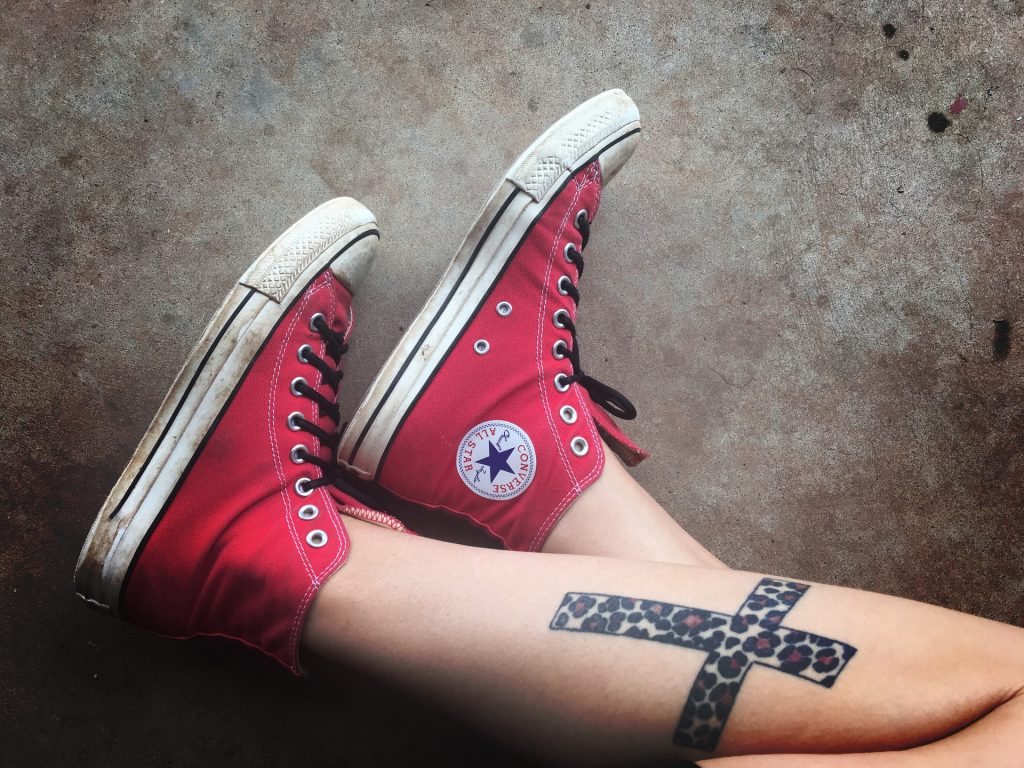
Forty-five million Americans have tattoos, according to Inked. That’s 14 percent of the total population. The percentage is higher, up to 40 percent, for adults between the ages of 26 and 40.
That’s a lot of people with ink—which is precisely why there’s also a lot of conversation tattoo removal.
According to a 2015 article in the Smithsonian, “As a result, more people with tattoo regret are doing something about it; in the last decade, the tattoo removal industry has grown 440 percent.”
Tattoo removal is no easy, one-and-done, visit to a dermatologist. It’s a commitment to multiple laser treatments, usually spaced out at four to six-week intervals, if complete erasure is the goal.
During the course of treatment, the patient might experience a number of different skin reactions ranging from redness to swelling or blisters to a temporary raising of the tattoo.
To answer this, it’s important to understand what, exactly, a tattoo is—ink deliberately inserted into the dermal (second) layer of the skin through ruptures in the skin’s top layer, or epidermis (the first layer of skin). Tattoo machines vary widely in terms of the number of punctures, from 50 to 3,000 distinct “pokes” per minute.
Each of those tiny dots of ink that have been put into the dermis needs to be broken up in order for a tattoo to disappear.
There are multiple types of laser removal available today. The standard technology utilizes lasers that deliver light in very short pulses. This light is selectively absorbed by the color of the tattoo ink. The high energy causes the tattoo ink to fragment into smaller particles of pigment that are then removed by the body’s immune system.
About two years ago, a new laser hit the market, the PicoSure. It debuted, according to the Smithsonian article, “what is called “picosecond technology,” firing laser pulses at a trillionth of a second—a “picosecond.” This broke tattoo ink up into even smaller pieces than was possible before, making it easier for your body to process the tattoo.”
No matter which laser a dermatologist uses—and it’s very important to see an experienced, professional, dermatologist for tattoo removal—there are potential skin concerns in play.
First is the possibility of pain during treatment. A topical numbing solution can help, but many patients report that lidocaine injections (such as those given at a dentist) are much more effective.
Immediately post-treatment, patients may experience symptoms including blisters (especially if the ink is dense or dark), swelling, temporary darkening or pinpoint bleeding (especially if the treatment is aggressive). Most of these are common, although some physicians maintain that pinpoint bleeding and the scabs can result in scarring. The reactions usually subside within a couple of weeks, but patients should definitely consult with their doctor if there are concerns.
As for longer-term side effects, the most common is a darkening or lightening of the skin (called hyper or hypo-pigmentation). Luckily, this usually self-corrects within 6 to 12 months after the final treatment session.
Sometimes a scar will occur, with keloid scarring (overgrowth of scar tissue) a potential risk. But the correct laser used at the correct level should result in no scarring.
Other, rare, problems include burns and infections, which is why you should find a dermatologist you can trust. Both of those must be dealt with by a medical professional, immediately.
Every tattoo is different—in size, placement and color—so every time a tattoo is removed the patient may experience a variety of reactions. What happens to the skin, from minor irritation to temporary pigmentation changes, is to be expected given the fact that a tattoo is, after all, an invasion of ink past the protective top layer of skin that then resides in the second layer for years.
Luckily, what’s done in the world of tattoos can be undone with the help of a qualified dermatologist. Patients should prepare for their skin to react to the treatments and need time to heal. Whatever the case, they will be much relieved to say goodbye to their ill-conceived ink.
For tattoo removal you can trust, make an appointment with The Dermatology Specialists today.